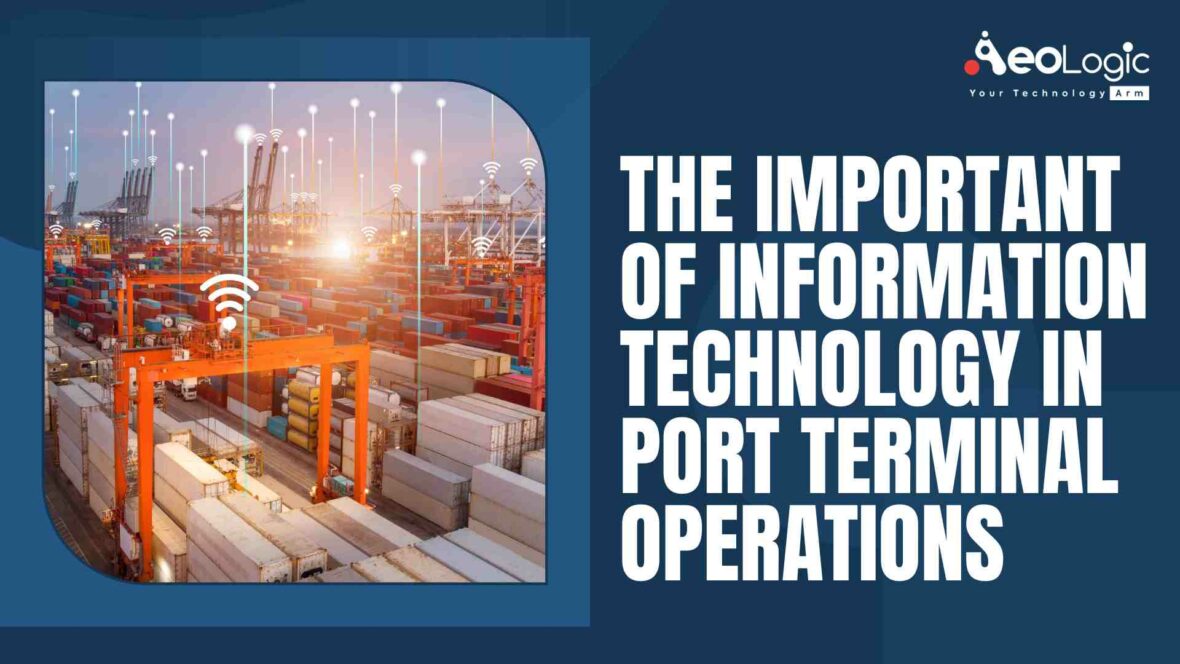Information technology is important in every industry, but it’s especially vital for port terminals. The reasons are clear: ports are extremely complex and use many different technologies to operate and manage their operations. They need these technologies because they have many different facilities that need to be monitored and managed by an automated system, which cannot be done manually or with limited resources alone. In this article, we explore the importance of IT in port terminal operations.
Let’s begin!
Table of contents
- What is Port Terminal Operations?
- The Benefits of IT in Port Terminal Operations
- How to Implementing IT solutions in ports Terminal Operations
- Port Terminals are Extremely Reliant on Technology
- Conclusion
Also see: Our RFID Solutions
What is Port Terminal Operations?
Port terminal operations are the tasks that a port performs to bring cargo from its point of origin to its destination. These operations can be broken down into two main categories: the receiving and shipping processes. The receiving process involves receiving a shipment at the port, then sorting and processing it. The shipping process involves moving the cargo from one vessel to another vessel or truck, as well as transporting it to its final point of destination.
Also Read: Why Is CRM Software a Game-changer When It Comes to Delivering Better Customer Experiences?
The Importance of IT in Port Terminal Operations
Enhance Efficiency in Port Terminal Operations
The use of information technology can help to increase efficiency in port terminal operations. Efficiency refers to the ability of an organization or system to produce goods and services with minimum input and waste while meeting customer needs at an affordable price. In other words, it’s a measure of how well an organization performs its tasks or whether they’re operating efficiently.
Information technology has played an important role in making ports more efficient since its inception over 100 years ago; however, today’s technology has made it possible for us to do much more than just automate our processes through automation software.
We have access nowadays to various types of mobile devices like smartphones that allow us not only to communicate but also to share files across our networks without having anything installed locally on any device.
This allows us maximum flexibility when working remotely from anywhere around the world because we don’t need any physical presence anymore just like how email works today where you send emails from anywhere around the world instantly without requiring any additional hardware setup beforehand.”
Also Read: 10 Ways to Use Artificial Intelligence to Improve Business Processes
Improve performance and productivity
Information technology (IT) can improve performance and productivity. IT helps with efficiency, quality, and safety. It also helps with customer service, communication, and collaboration between departments within a port terminal operations facility.
Enhance Customer Experience
Customers expect a smooth, easy experience when they interact with your company. This means that you need to make sure that customers can easily find information about their shipments and track them as they come through the port terminal. In addition, it’s important that your customers have access to information such as:
- How much time it will take them to receive their package(s) once it has left the dock or warehouse.
- What type of carrier is being used (airplane, truck, or rail)
- Whether there are any delays in receiving their packages.
Improve Safety and Security
One of the most important aspects of technology is its ability to improve safety and security. This means that using technology can help prevent accidents, theft and other crimes, pollution, and damage to equipment.
For example:
- Information technology helps you monitor your operations more efficiently by allowing you to track where vehicles are located at any given time. This makes it easier for you to spot potential problems before they occur (for example, if a driver has gone on vacation).
- You’ll also have access to information about how long it takes them from one end of the terminal complex until they reach their destination. This helps prevent accidents from happening when someone gets lost while walking back home after work hours finish early due to lack of employees available during normal business hours.”
Also Read: The Role of AI in Education And Learning: Just Promises Or Revolution
How to Implementing IT solutions in ports Terminal Operations
The benefits of IT in port terminal operations are numerous. They can improve the efficiency, safety, and security of the port, as well as its overall productivity.
In addition to these benefits, IT can also help increase the profitability of port terminals through better management of resources and more effective logistics operations.
The key elements involved in implementing IT solutions in ports include:
Planning & Analysis:
The planning phase involves identifying the current state of affairs at the port terminal, and determining what is required to achieve desired outcomes. This includes identifying what resources are available and what needs to be purchased or developed by using existing assets.
Also Read: How RFID Tagging is Revolutionizing the Jewelry Industry
Designing & Development:
This involves creating a detailed plan that outlines all aspects of the project including timelines, budgets, and requirements from different stakeholders involved in implementing the project like engineering teams, etc. It also includes designing an appropriate system architecture based on specific requirements from different stakeholders involved such as management teams etc.. Thereafter comes development which involves developing a detailed software solution based on specifications provided by the client etc.
Implementation & Testing:
Implementation involves installing and configuring the solution on the client’s environment. It also includes the migration of data from existing systems to new systems. Testing is a critical step that involves testing certain key functionalities to ensure they are working as per specifications provided by the client etc.
Also Read: How Modern Technology is Improving Food Supply Chain
Go-live:
The final step of the software development process is go-live, which involves the implementation of software solutions in the client’s environment and training users to use the new system.
Also Read: 10 Ways to Use Artificial Intelligence to Improve Business Processes
Port Terminals are Extremely Reliant on Technology
Even though the technology is important in every industry, it is especially vital for port terminals. Port terminals are responsible for receiving and storing cargo that is shipped from all over the world. They also process these goods into finished products or raw materials before they are shipped to their final destination. The importance of using technology to improve efficiency, safety, and security cannot be understated here.
Conclusion
It is important for port terminals to be able to use technology in order to improve efficiency, safety, and security. The more efficient they are, the less time it takes them to complete their tasks which can also lead to higher productivity. This will help reduce costs as well as improve customer experience by providing quick responses when needed during peak times such as weekends or holidays when there aren’t enough employees available who can handle all jobs themselves due to workload requirements imposed on them by management companies.
Are you looking to implement technology into your business? If yes, so, please feel free to contact us at support@aeologic.com
Related Blogs:
- How AI/ML Can Change the Public Transportation Industry
- Transforming Business With Digital Technology in the Oil Palm Industry in India
- Importance of Digital Asset Management in the Retail Industry
- How AI is Transforming the Agriculture Industry
- 10 Ways to Use Artificial Intelligence to Improve Business Processes
- The Future of IoT Technology in Convenience Stores
- Building Manufacturing Resilience Through AI and ML
Talk to us for a free consultation with our industry experts- support@aeologic.com






